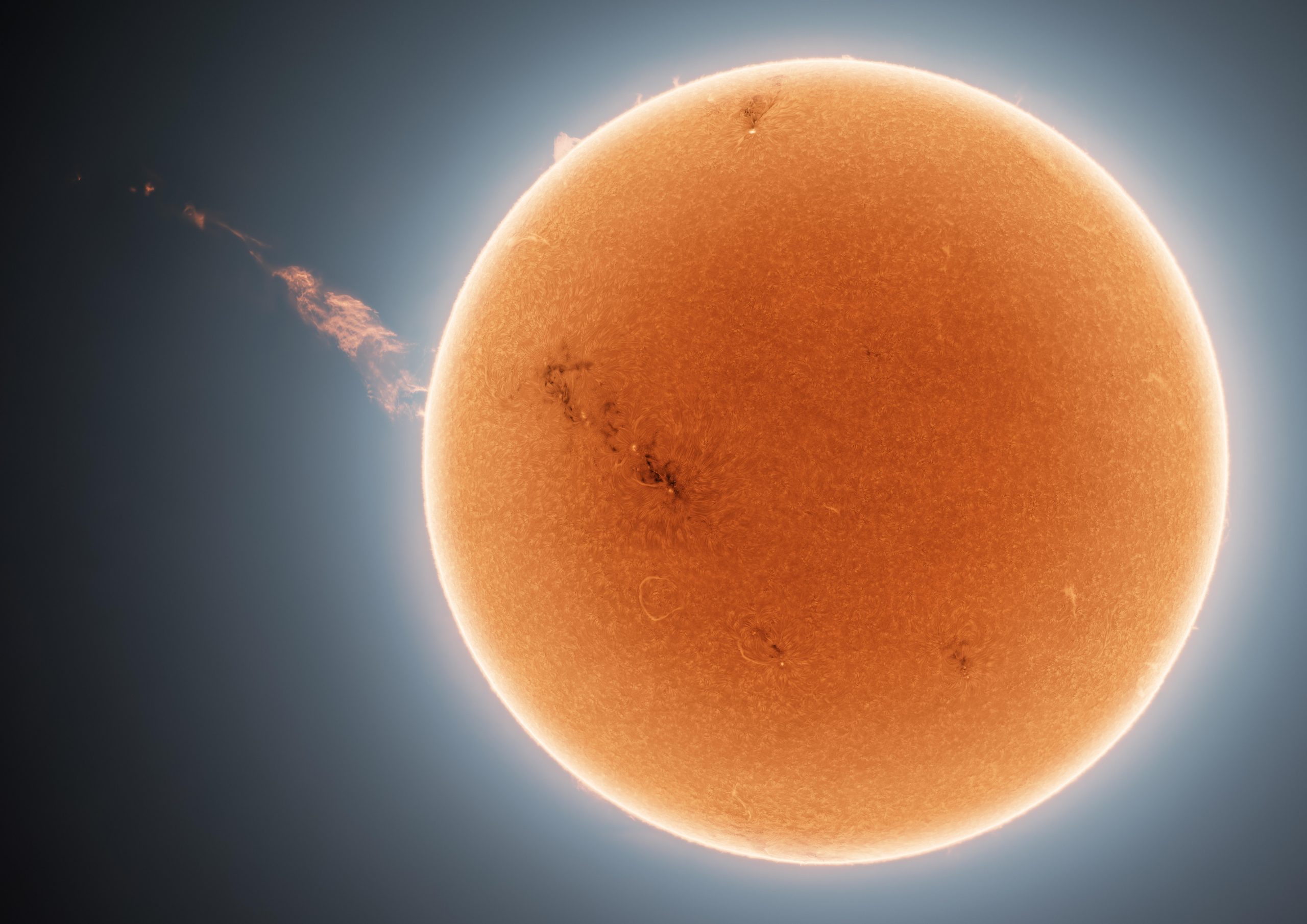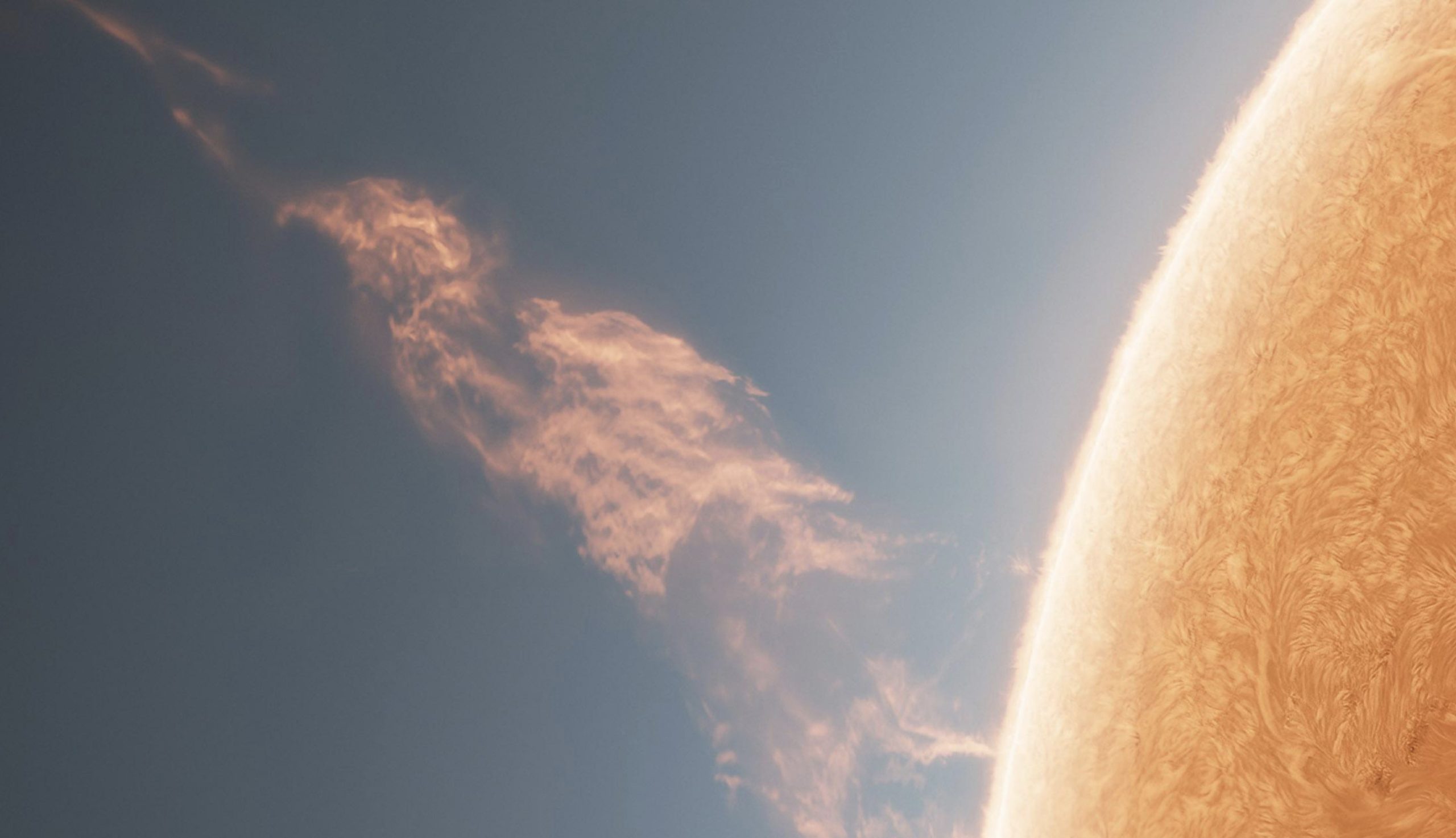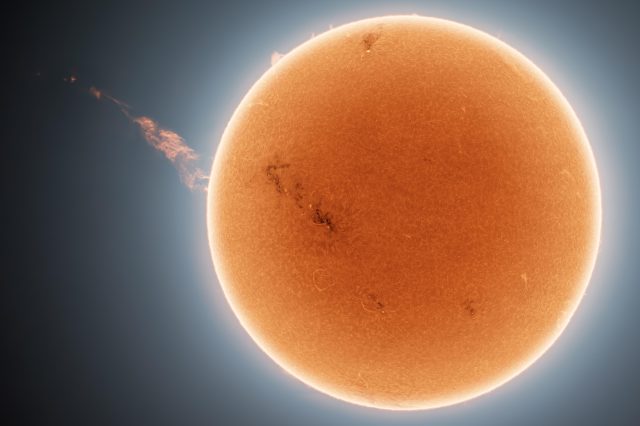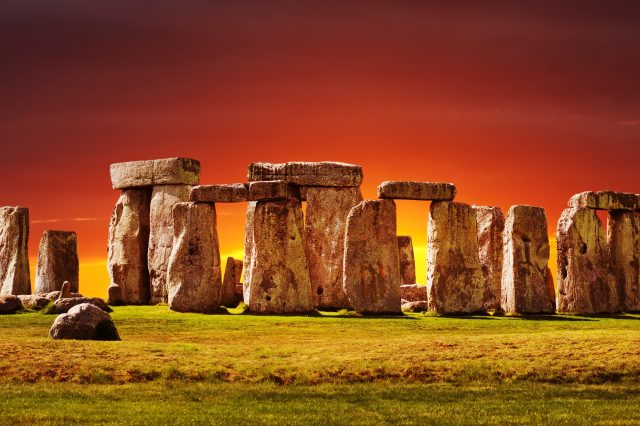Astrophotographer James McCarthy captured a stunning photograph of the Sun, and managed to snap it just as the sun was ejecting a massive 1.6 million-kilometer-long plasma plume into outer space.
Astrophotographer Andrew McCarthy, who earlier this year snapped, together with his colleague, one of the most detailed photographs of the surface of the Moon, has now captured a mind-boggling photograph of our solar system’s star, and he managed to capture the moment our Sun blasted out a massive plume of plasma into outer space. The fiery scene captured by McCarthy, clearly visible in his image, is what is known as a coronal mass ejection (CME). This one stretched out into the vastness of space at a distance of more than 1.6 million kilometers (1 million miles) from the solar surface.
McCarthy captured the photograph on September 24 and shared the stunning view on Reddit, not long after which the image went viral for more than obvious reasons. The CME McCarthy captured was part of a minor solar storm, class G-1—the lowest category according to the National Oceanic and Atmospheric Administration (NOAA) geomagnetic storm scale. SpaceWeather.com reported that this Coronal Mass Ejection pointed away from Earth.
“Today the sun produced the largest coronal mass ejection I’ve ever witnessed,” McCarthy wrote in his Reddit post. “Here’s my composite shot of it, created by capturing hundreds of thousands of images over several hours using a specially modified telescope.”
The CME the astrophotographer had captured was initially contained in a large loop connected to the Sun’s surface. This is referred to by astronomers as a bulge. Eventually, this massive structure broke up and eventually ended up flying into outer space at an approximate speed of 100,000 mph (161,000 km/h).”

Although the surface of the Sun and the CME are orange in the photo, that is not the case. A type of light that appears pinkish-red to us is naturally emitted by the chromosphere (the lower region of the Sun’s atmosphere) and CMEs. Because each image was exposed for such a short period of time, the original images were almost completely white. In order to highlight the CME and provide contrast between the individual structures on the solar surface, McCarthy added the orange digitally as he composed the final image.
The Sun, however, retains a noticeable halo of white — which gives it an even better look, personally — because the rest of the image was not filtered orange. Solar maximum, which lasts for around seven years, has increased solar activity in recent months, increasing the frequency of CMEs. McCarthy explained that as we get closer to the solar maximum, more similar images will hopefully be shot.
Finally, the astrophotographer warned people in his Reddit post not to try to observe the Sun without the proper equipment since this can be very dangerous for your eyes. “Don’t point a telescope at the Sun. You’re going to fry your camera or, worse, your eyes.” Instead, McCarthy used a specially modified telescope to capture the stunning view of the Sun. Make sure to follow Andrew on social media by following him on Twitter and Instagram, and make sure to drop by his website, cosmicbackground.io, and check out more of his work. Make sure you grab yourself a copy of the stunning CME photograph because his work shows why astrophotography is an art.
Have something to add? Visit Curiosmos on Facebook. Join the discussion and participate in awesome giveaways in our mobile Telegram group. Join Curiosmos on Telegram Today. t.me/Curiosmos





